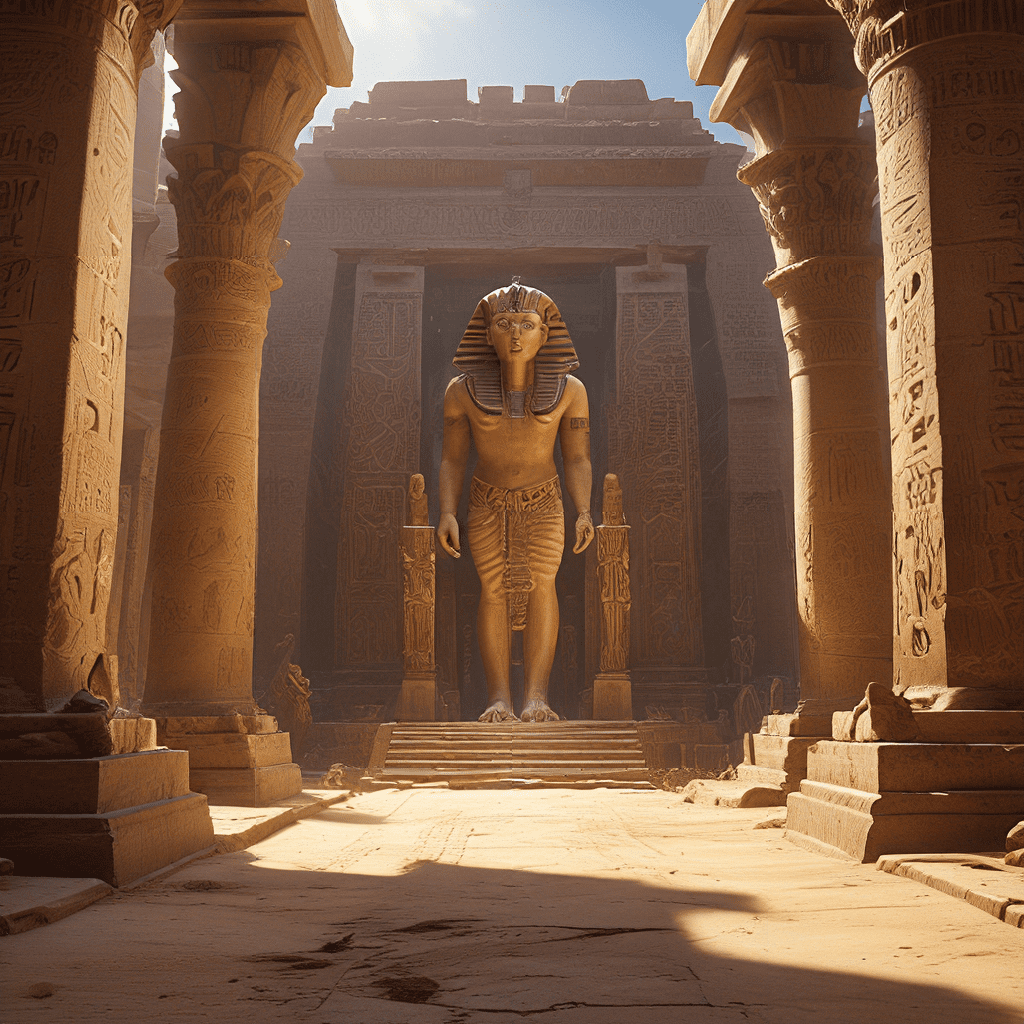Exploring the Temples of Egypt: An Interactive Journey
1. Introduction: The Sacred Landscape
Step into a world of ancient wonder and uncover the secrets of Egyptian temples. These magnificent structures weren’t just buildings; they were the beating heart of Egyptian society, where gods were worshipped, pharaohs ruled, and people found meaning in life. Imagine vast courtyards, towering pillars, and intricate carvings that tell stories of gods, pharaohs, and the afterlife. This journey invites you to explore these sacred places, virtually stepping back in time to understand their significance.
2. The Temple Complex: A City of Stone
Egyptian temples weren’t solitary buildings; they were complex cities of stone. Picture a grand entrance marked by massive pylons, towering gateways that symbolize the entrance to the divine realm. Beyond the pylons, you’d find open courtyards, where people would gather for ceremonies and festivals. Next, you’d enter the hypostyle hall, a breathtaking space with rows of massive pillars supporting a roof, creating a sense of awe and grandeur. Finally, you’d reach the innermost sanctuaries, the most sacred of all, where the statue of the temple’s patron deity resided. Each element of the temple held symbolic meaning. The pylons represented the strength and power of the pharaoh, while the hypostyle hall symbolized the cosmic order. The sanctuaries were designed to evoke a sense of mystery and connection to the divine.
3. Divine Dwellings: The Gods and Goddesses
Ancient Egyptians believed in a vast pantheon of gods and goddesses, each with their own unique personality and role. These deities represented forces of nature, human emotions, and concepts like creation, fertility, and justice. Temples were dedicated to specific deities, reflecting their importance and the beliefs of the people. For example, the majestic Temple of Karnak was dedicated to the god Amun-Re, the supreme god of creation and the sun. The Temple of Luxor celebrated the god Amun, the pharaoh, and the sacred cow goddess Hathor. The Temple of Abu Simbel, carved into the cliffs of Nubia, honored the pharaoh Ramses II. Each temple held unique rituals and offerings tailored to the deity it honored, offering a glimpse into the complex and evolving tapestry of Egyptian religion.
4. The Pharaoh’s Role: Divine Ruler
In ancient Egypt, the pharaoh was more than just a ruler; he was a god-king. He was believed to be the embodiment of Horus, the falcon god, and the son of Ra, the sun god. The pharaoh’s divine status gave him the authority to rule and the responsibility to maintain cosmic order. Temple rituals emphasized the pharaoh’s connection to the divine. He participated in ceremonies, presented offerings to the gods, and played a crucial role in maintaining the temple’s construction and upkeep. Temples were a testament to the pharaoh’s power and served as a visual reminder of his divine lineage. The massive statues, reliefs, and inscriptions throughout the temple celebrated the pharaoh’s achievements, solidifying his legacy for posterity.
5. The Ritual Cycle: Offerings and Celebrations
Life at the temple revolved around a constant cycle of rituals, ceremonies, and daily offerings. Priests played a crucial role in these rituals, ensuring the gods’ favor and maintaining the temple’s sacredness. They performed daily rituals, including offering prayers, incense, and food to the deities. Annual festivals and celebrations were elaborate events, involving elaborate processions, music, dance, and theatrical performances. These festivities honored specific deities, celebrated important events in the agricultural calendar, or marked significant moments in the pharaoh’s reign. Temples were buzzing with activity, their walls echoing with the chants of priests, the music of musicians, and the prayers of the faithful, creating a vibrant and immersive atmosphere.
6. The Temple Walls Speak: Hieroglyphic Tales
The walls of Egyptian temples were adorned with beautiful and intricate hieroglyphs, a form of writing that used pictures to represent words and concepts. These hieroglyphs didn’t just decorate the temple; they were the language of storytelling. They depicted scenes from Egyptian mythology, tales of pharaohs, and the beliefs surrounding the afterlife. Imagine walking through a temple, your eyes drawn to magnificent murals that tell stories of gods battling demons, pharaohs conquering enemies, and the journey of the soul to the afterlife. These hieroglyphs provide invaluable insights into ancient Egyptian culture, their beliefs, and their understanding of the world.
7. A Journey Through Time: From Karnak to Abu Simbel
Each temple in Egypt holds its own unique story. Imagine yourself standing before the towering columns of the Temple of Karnak, one of the largest religious complexes ever built. Explore the magnificent Temple of Luxor, a testament to the pharaohs Amenhotep III and Ramesses II. Travel to the Temple of Abu Simbel, carved into the Nubian cliffs and dedicated to the mighty Ramesses II. Each temple, with its unique architecture, carvings, and stories, offers a glimpse into a different era and a different aspect of Egyptian civilization. Take a virtual journey, explore these magnificent temples, and discover their secrets.
8. The Legacy of Egyptian Temples: A Modern Perspective
Today, Egyptian temples stand as a testament to the enduring power of human creativity and the enduring fascination of ancient cultures. They inspire awe and wonder in visitors, reminding us of the ingenuity of ancient civilizations. The temples also act as a powerful reminder of the importance of preserving cultural heritage and the need to learn from the past. Each temple offers a unique perspective on Egyptian culture, religion, and history, inviting us to explore, learn, and appreciate the enduring legacy of this ancient civilization.




